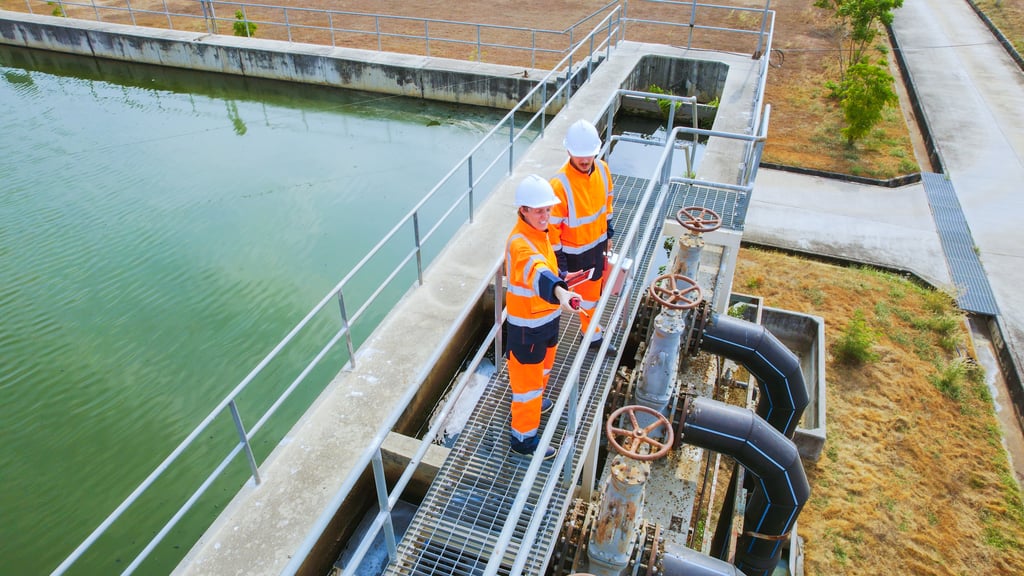Supply chain risk mapping is a strategy that proactively helps companies maintain the stability and robustness of their responsible sourcing practices in the face of emerging supply chain risks.
By Dmitry Andreev, Senior Consultant, Consulting APAC, LRQA & Katie Yewdall, Director, Sustainability Consulting APAC, LRQA
What is environmental supply chain risk mapping, and how to do it right?
Understanding the basics
Supply chain risk mapping is a strategy that proactively helps companies maintain the stability and robustness of their responsible sourcing practices in the face of emerging supply chain risks. By gaining greater visibility, effective prioritization, and predictive capabilities, companies can better prepare for and manage future risks, ultimately reducing the risk of ESG violations and ensuring a more sustainable and ethical supply chain.
Environmental supply chain risk mapping is an extension of a general supply chain risk mapping process, with focus on identifying, assessing, and managing diverse environmental risks. These risks are associated with factors such as climate change, resource scarcity, pollution, and others. The goal of environmental supply chain risk mapping is to identify issues material to your direct and extended supply chain partners and to develop strategies for mitigating or adapting to these risks.
Developing targeted programs
Materiality of environmental issues is complex and can vary significantly from one supply chain to another. For example, the materiality of an environmental issue may depend on:
- The sector in question - Environmental concerns and risks associated with the energy sector, for example, are different from those in the apparel or food industries due to the different products needed.
- The nature of production processes, resource use, and waste generation – these vary widely.
- Complexity and geographical scope of the supply chain - A supply chain that is complex and global will have different environmental challenges compared to a local one.
- Tier proximity – if your direct suppliers are raw material producers that have a large water footprint, in the food sector for example, water use will be more material to you than if raw material producers are further down your supply chain, such as in the fashion industry.
As companies find themselves pressured between increasing stakeholder demands for actions and a growing number of ESG regulations on environmental and social issues, the smart allocation of limited resources to meet these expectations becomes critical. By making informed decisions about where to allocate resources, companies can optimize their journey toward building more sustainable and responsible business practices.
Where this is relevant?
Some examples of how we have helped clients are:
Environmental risk mapping in investor portfolios – We used data from our proprietary platform LRQA EiQ to assess the risks in the tea industry in Indonesia before an investment was made by a private equity firm. This helped the investor to know what questions to ask their potential investee in order to manage their own exposure to specific environmental risks though this investment.
Environmental supply chain risk mapping is relevant across all sectors and can be either high level or specific to a risk.
Deforestation risk mapping of suppliers - We supported an Asian beverages company in screening its supplier base for exposure to not only human rights risks, but also to deforestation risks. Drawing on publicly available data and considering rates of cover loss and shares of commodity-driven deforestation, LRQA assigned a level of deforestation risk per commodity and country. This deforestation risk score was integrated into the overall ESG supply risk exposure of the client’s suppliers. The results supported the client to develop a better understanding of the risks associated with sourcing specific products from certain countries. Initial recommendations provided by LRQA on how to prioritize actions may further support the client in enhancing its management of both social and environmental risks within its supply chain.
Getting started
We consistently see gaps in frameworks from even the most well-known companies, especially when they deploy blanket environmental programs to all suppliers. These blanket approaches disregard their supplier’s maturity level, potential to contribute to the company’s goals and sometimes even the materiality of the environmental issue.
Companies that revert to blanket program tactics commonly encounter limitations preventing program growth, effectiveness and generally drainage of valuable resources and time. Given the complexity of most supply chain operations and materiality of environmental topics, the process for risk mapping an entire program can be a challenge. To get started, we recommend building the foundation with these simple steps:
Data Collection
Data collection will be one of the most important steps in the environmental risk mapping process, as it requires gathering a holistic and quality data set. Without accurate and quality data, transparent risk mapping will not be possible. The data collection process includes:
- Defining environmental material topics that are most relevant to your industry and organization
- Defining materiality of environmental topics to your direct and upstream supplier tiers
- Engaging suppliers and gathering data on suppliers’ environmental management programs, practices and historical performance and indicators
- Monitoring ongoing performance indicators and suppliers’ ability to manage their environmental risks and drive resource efficiency
Risk Prioritization
Supplier’s should then be prioritized based on the materiality, significance, potential impact, and likelihood of their environmental risks. For example, a supplier from an essential sourcing site that has water intensive production processes and has a history of fines imposed by local government might be considered a higher risk, especially if the supplier has no proper management system in place.
Visualization
The results of the risk assessment are typically visualized on a supply chain risk map. This map can take various forms, such as a heat map, a dashboard, or a matrix. Visualization helps supply chain professionals understand where the risks are concentrated and their potential severity.
Program Customization
Once there is clear visibility on where each of the environmental risks are and which suppliers are associated with these risks, a strategic supplier management program can be developed. Categorizing suppliers based on environmental risk allows proper resource allocation and sufficient dedication of engagement, capacity building activities and other types of support. This kind of risk-based supplier management program enables better environmental risk mitigation, resource efficiency, pollution prevention, climate change management, deforestation risk monitoring and other benefits.
Also note, supply chain environmental risk mapping is an ongoing process. Companies must continuously monitor the materiality of environmental risks and how their suppliers are managing them due to a rapidly changing business and global environment.
Get in touch with us to see how we can provide you with all the tools you need to effectively map your supply chain environmental risk and build effective and impactful environmental program



